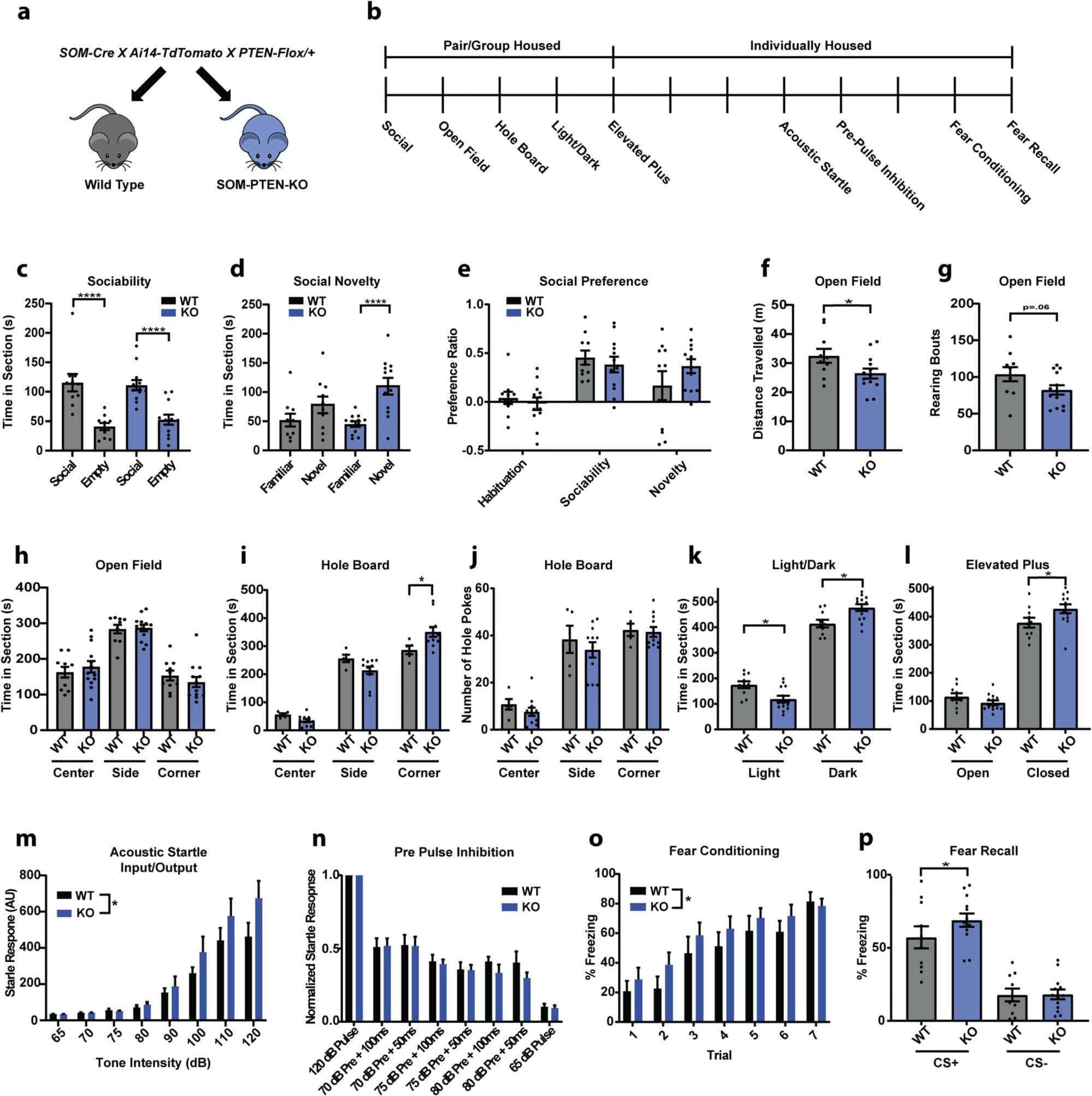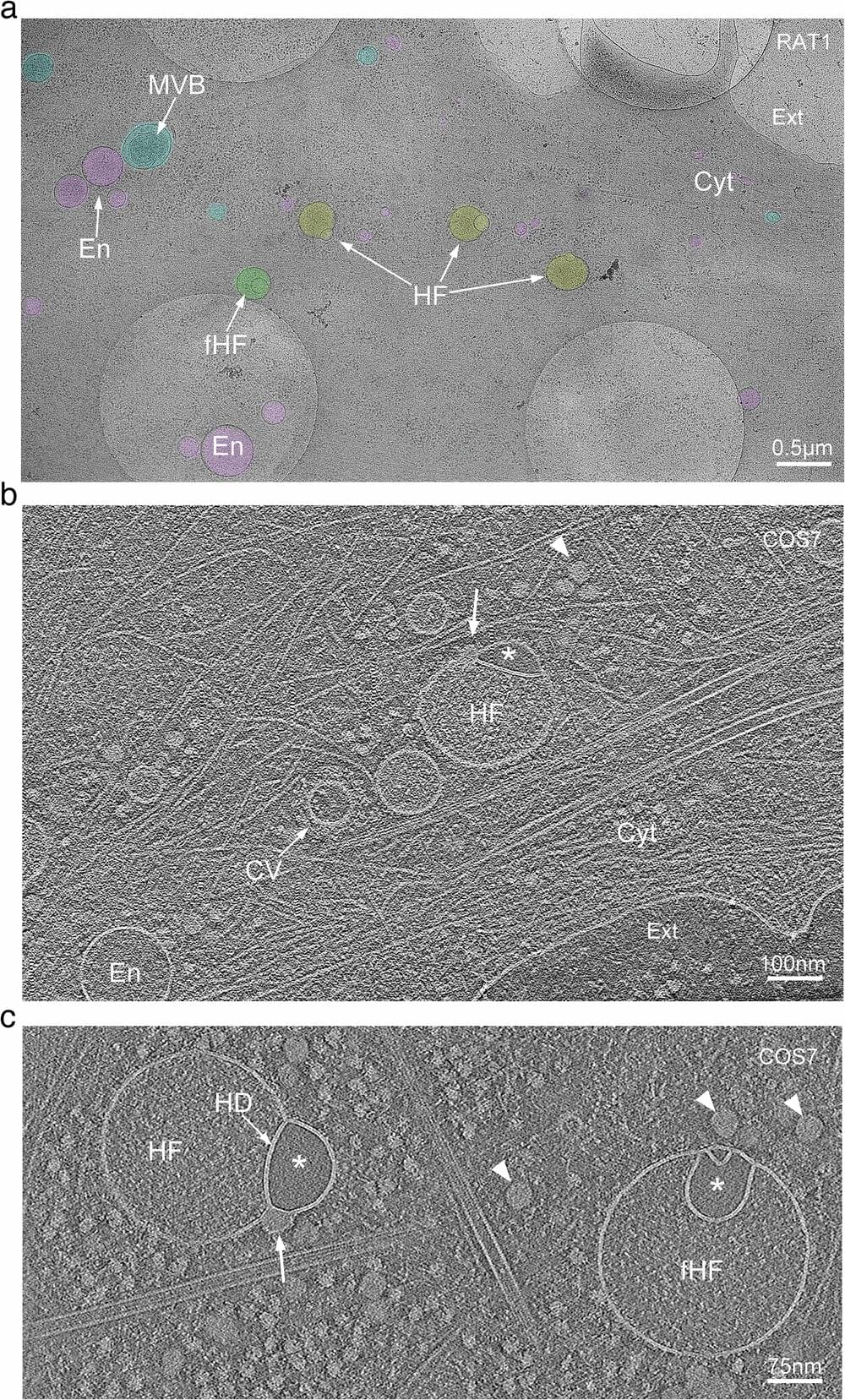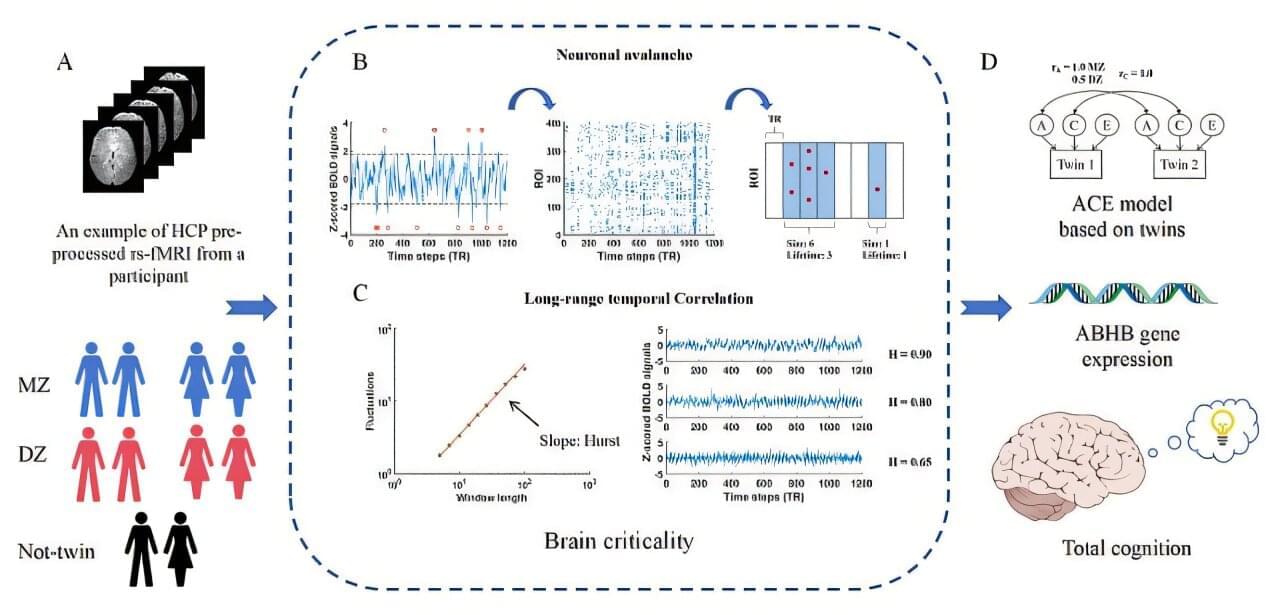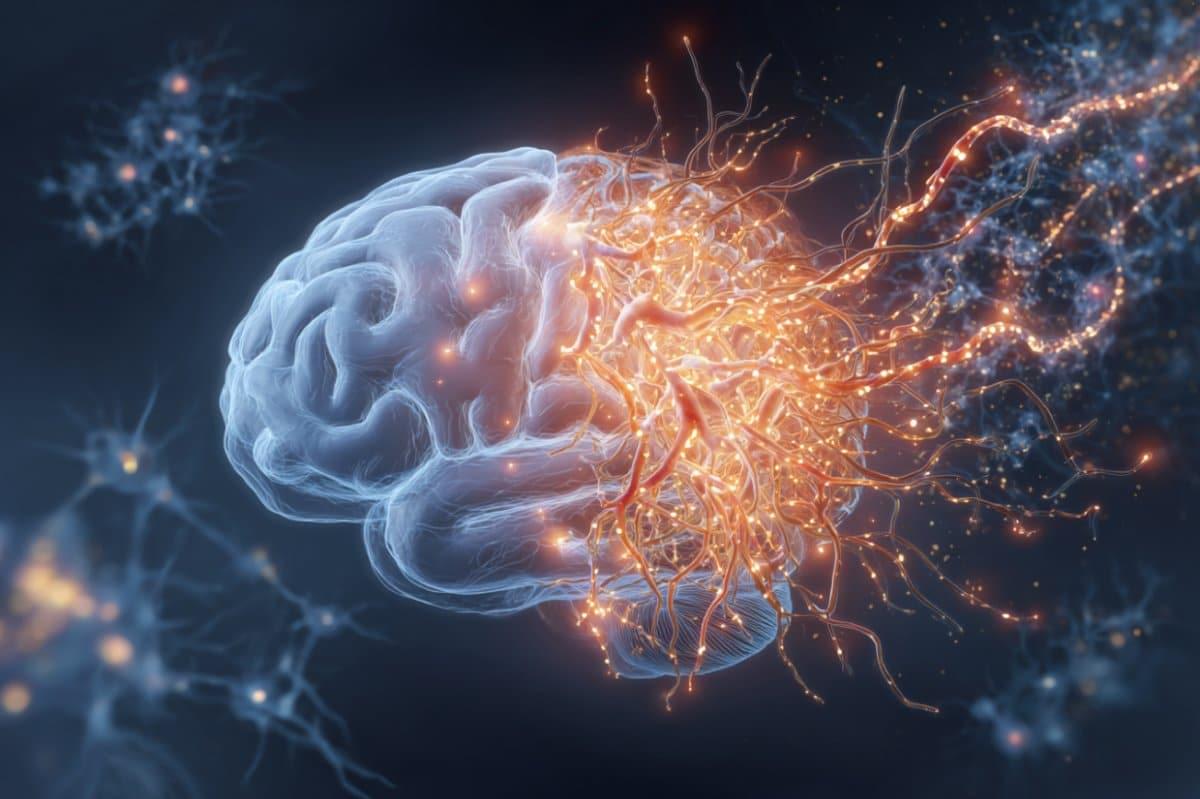Vitamin C fuels skin regeneration by unlocking genes that drive cell growth—making aging skin act young again.



Researchers at the Max Planck Florida Institute for Neuroscience have discovered how loss of a gene strongly associated with autism and macrocephaly (large head size) rewires circuits and alters behavior.
Their findings, published in Frontiers in Cellular Neuroscience, reveal specific circuit changes in the amygdala resulting from PTEN loss in inhibitory neurons, providing new insights into the underlying circuit alterations that contribute to heightened fear and anxiety.
PTEN has emerged as one of the most significant autism risk genes. Variations in this gene are found in a significant proportion of people with autism who also exhibit brain overgrowth, making it a key player in understanding differences in brain function. To investigate the impact of PTEN misregulation, researchers have turned to animal models, where global reduction of PTEN results in altered sociability, repetitive behaviors, and increased anxiety that are often associated with ASD in humans.

Introducing a new, unifying DNA sequence model that advances regulatory variant-effect prediction and promises to shed new light on genome function — now available via API.
The genome is our cellular instruction manual. It’s the complete set of DNA which guides nearly every part of a living organism, from appearance and function to growth and reproduction. Small variations in a genome’s DNA sequence can alter an organism’s response to its environment or its susceptibility to disease. But deciphering how the genome’s instructions are read at the molecular level — and what happens when a small DNA variation occurs — is still one of biology’s greatest mysteries.
Today, we introduce AlphaGenome, a new artificial intelligence (AI) tool that more comprehensively and accurately predicts how single variants or mutations in human DNA sequences impact a wide range of biological processes regulating genes. This was enabled, among other factors, by technical advances allowing the model to process long DNA sequences and output high-resolution predictions.

The discovery of an unknown organelle inside our cells could open the door to new treatments for devastating inherited diseases.
The organelle, a type of specialized structure, has been dubbed a “hemifusome” by its discoverers at the University of Virginia School of Medicine and the National Institutes of Health. This little organelle has a big job helping our cells sort, recycle and discard important cargo within themselves, the scientists say. The new discovery could help scientists better understand what goes wrong in genetic conditions that disrupt these essential housekeeping functions.
“This is like discovering a new recycling center inside the cell,” said researcher Seham Ebrahim, Ph.D., of UVA’s Department of Molecular Physiology and Biological Physics. “We think the hemifusome helps manage how cells package and process material, and when this goes wrong, it may contribute to diseases that affect many systems in the body.”

Caffeine has long been associated with health benefits, including a reduced risk of age-related diseases. However, the specifics of how caffeine interacts with cellular mechanisms and nutrient and stress-responsive gene networks have remained elusive — until now.
In this pioneering research, published in the journal Microbial Cell, scientists used fission yeast, a single-celled organism with surprising similarities to human cells, to delve deeper into caffeine’s impact.
The researchers discovered that caffeine influences aging by engaging an ancient cellular energy system.
A few years ago, the same team found that caffeine prolongs cell life by acting on a growth regulator known as TOR (Target of Rapamycin). TOR is a molecular switch that regulates cell growth based on available food and energy and has been part of the evolutionary landscape for over 500 million years.
However, their latest study unveiled a surprising new finding: caffeine does not directly act on the TOR switch. Instead, it activates AMPK, a cellular fuel gauge that is conserved through evolution in both yeast and humans.
“When your cells are low on energy, AMPK kicks in to help them cope,” senior author Charalampos (Babis) Rallis, a reader in genetics, genomics and fundamental cell biology at Queen Mary University of London, said in a news release. “And our results show that caffeine helps flip that switch.”
Intriguingly, AMPK is also the target of metformin, a common diabetes medication currently under scrutiny for its potential to extend human lifespan when used alongside rapamycin.

An MRI scan revealed a brain tumor located in a difficult area, and performing a biopsy would carry significant risks for the patient, who had initially sought medical help due to double vision. Cases like this, discussed by a multidisciplinary team of cancer specialists, led researchers at Charité – Universitätsmedizin Berlin, along with their collaborators, to search for alternative diagnostic methods.
Their solution is an AI model that analyzes specific features in the genetic material of tumors, particularly their epigenetic fingerprint, which can be obtained from sources such as cerebrospinal fluid. As reported in the journal Nature Cancer, the model classifies tumors both rapidly and with high accuracy.

A new study has revealed compelling evidence that brain criticality—a dynamic balance between neural excitation and inhibition—has a strong genetic foundation and is associated with cognitive performance. The research was published on June 23 in the Proceedings of the National Academy of Sciences.
Led by Prof. Liu Ning from the Institute of Biophysics of the Chinese Academy of Sciences (CAS) and Prof. Yu Shan from the Institute of Automation of CAS, the team analyzed resting-state functional MRI (rs-fMRI) data from the Human Connectome Project S1200 release. The dataset included 250 monozygotic twins, 142 dizygotic twins, and 437 unrelated individuals, providing a robust framework for examining the heritability of critical brain dynamics.
The results showed that brain criticality is significantly influenced by genetic factors, with stronger genetic effects observed in primary sensory cortices compared to higher-order association regions. These findings suggest that the capacity of the brain to maintain near-critical dynamics—previously associated with optimal information processing and cognitive flexibility—is, to a substantial degree, inherited.
Greg Egan’s Diaspora is one of the most ambitious and mind-bending science fiction novels ever published. It came out in 1997 and originally started as a short story called “Wang’s Carpets.” That story ended up as a chapter in the novel. Diaspora is: dense, smart, and way ahead of its time.
This is hard science fiction to the core. Egan invents entire new branches of physics. He reimagines life, consciousness, time, space — even what it means to be human. The book doesn’t ease you in. There’s a glossary, invented physics theories like Kozuch Theory, and characters that don’t even have genders. But if you stick with it, what you get isn’t just a story, it’s a look at what the future might actually become.
By the year 2,975, humanity isn’t one species anymore. It’s split into three groups: Fleshers: The biological humans, including the “statics” (unchanged baseline humans) and all sorts of heavily modified versions — underwater people, gene-hacked thinkers, even “dream apes” who gave up speech to live closer to nature. Gleisners: AIs in robotic bodies that live in space. They care about the physical world and experience time like regular humans. They’re kind of old-school — still sending ships to the stars, trying to build things in real space. Citizens: These are digital minds that live entirely in simulated worlds called polises.
👽 Please consider supporting this channel on Patreon: / ideasoficeandfire.
or PAYPAL — https://paypal.me/QuinnsIdeas?locale… 🎨 Art: Adobe Licensed. 🎵 Music: / @jamezdahlmusic 📚 Get These Books! Affiliate link* https://amzn.to/3HSixNx Quinn’s Discord:
/ discord FOLLOW QUINN ON TWITTER: Twitter:
/ ideasofice_fire I NOW HAVE A SUBREDDIT:
/ ideasoficeandfire Quinn’s New Graphic Novel: https://www.quinnhoward.net/theliebeh… Quinn’s Comic Books: https://www.quinnhoward.net/shop Quinn’s Website: https://www.quinnhoward.net Like me on Facebook!:
/ ioiaf 🎥 Mentioned Videos 🎬 Other Playlist Three-Body Playlist:
• Three Body Problem H.P. Lovecraft Playlist:
• LOVECRAFT Hyperion Playlist:
• Hyperion Dune Playlist:
• Dune Lore Explained Foundation Playlist:
• Isaac Asimov Feel free to leave a comment like and subscribe! Thanks For Watching!.
🎨 Art: Adobe Licensed.
🎵 Music: / @jamezdahlmusic.
📚 Get These Books! Affiliate link*
https://amzn.to/3HSixNx.
Quinn’s Discord: / discord.
FOLLOW QUINN ON TWITTER: Twitter: / ideasofice_fire.
I NOW HAVE A SUBREDDIT: / ideasoficeandfire.
Quinn’s New Graphic Novel: https://www.quinnhoward.net/theliebeh…
Buy Quinn’s Comic Books: https://www.quinnhoward.net/shop.
Quinn’s Website: https://www.quinnhoward.net.
Like me on Facebook!: / ioiaf.
🎥 Mentioned Videos.

And an increased all-cause mortality risk…
Join us on Patreon! https://www.patreon.com/MichaelLustgartenPhD
Discount Links/Affiliates:
Blood testing (where I get the majority of my labs): https://www.ultalabtests.com/partners/michaellustgarten.
At-Home Metabolomics: https://www.iollo.com?ref=michael-lustgarten.
Use Code: CONQUERAGING At Checkout.
Clearly Filtered Water Filter: https://get.aspr.app/SHoPY